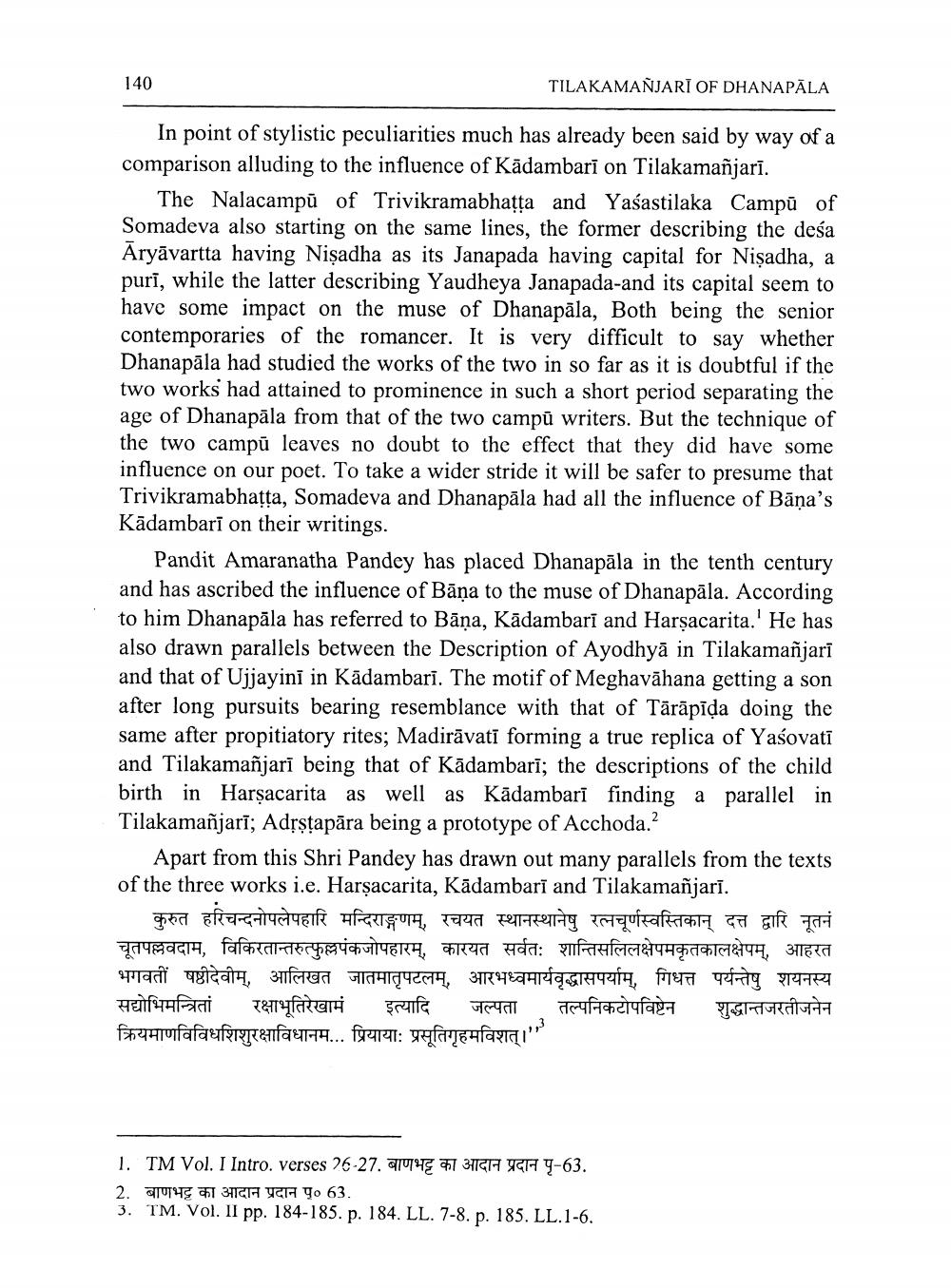________________
140
TILAKAMANJARĪ OF DHANAPĀLA
In point of stylistic peculiarities much has already been said by way of a comparison alluding to the influence of Kādambari on Tilakamañjarī.
The Nalacampū of Trivikramabhatta and Yasastilaka Campū of Somadeva also starting on the same lines, the former describing the desa Āryāvartta having Nişadha as its Janapada having capital for Nişadha, a purī, while the latter describing Yaudheya Janapada-and its capital seem to have some impact on the muse of Dhanapāla, Both being the senior contemporaries of the romancer. It is very difficult to say whether Dhanapāla had studied the works of the two in so far as it is doubtful if the two works had attained to prominence in such a short period separating the age of Dhanapāla from that of the two campū writers. But the technique of the two campū leaves no doubt to the effect that they did have some influence on our poet. To take a wider stride it will be safer to presume that Trivikramabhatta, Somadeva and Dhanapāla had all the influence of Bāna's Kādambarī on their writings.
Pandit Amaranatha Pandey has placed Dhanapāla in the tenth century and has ascribed the influence of Bāņa to the muse of Dhanapāla. According to him Dhanapāla has referred to Bāņa, Kādambarī and Harşacarita.' He has also drawn parallels between the Description of Ayodhyā in Tilakamañjarī and that of Ujjayini in Kādambarī. The motif of Meghavāhana getting a son after long pursuits bearing resemblance with that of Tärāpīda doing the same after propitiatory rites; Madirāvati forming a true replica of Yaśovati and Tilakamañjarī being that of Kādambarī; the descriptions of the child birth in Harsacarita as well as Kādambarī finding a parallel in Tilakamañjarī; Adrstapāra being a prototype of Acchoda.?
Apart from this Shri Pandey has drawn out many parallels from the texts of the three works i.e. Harşacarita, Kādambari and Tilakamañjarī.
कुरुत हरिचन्दनोपलेपहारि मन्दिराङ्गणम्, रचयत स्थानस्थानेषु रत्नचूर्णस्वस्तिकान् दत्त द्वारि नूतनं चूतपल्लवदाम, विकिरतान्तरुत्फुल्लपंकजोपहारम्, कारयत सर्वतः शान्तिसलिलक्षेपमकृतकालक्षेपम्, आहरत भगवती षष्ठीदेवीम्, आलिखत जातमातृपटलम्, आरभध्वमार्यवृद्धासपर्याम्, गिधत्त पर्यन्तेषु शयनस्य सद्योभिमन्त्रितां रक्षाभूतिरेखामं इत्यादि जल्पता तल्पनिकटोपविष्टेन शुद्धान्तजरतीजनेन क्रियमाणविविधशिशुरक्षाविधानम... प्रियायाः प्रसतिगहमविशत।''
1. TM Vol. I Intro. verses 26-27. 014€ 77 31567 H 4-63. 2. a10145 81 36F YCF YO 63. 3. TM. Vol. II pp. 184-185. p. 184. LL. 7-8. p. 185. LL.1-6.




